The Pope of Greenwich Village (1984)
Mickey Rourke, Eric Roberts, Daryl Hannah, Geraldine Page, Kenneth McMillan, Burt Young, Jack Kehoe, M. Emmet Walsh, Tony Musante, Val Avery, Frank Vincent and Tony Lip
Director – Stuart Rosenberg
From United Artists
Irish-Italian Charlie Moran (Rourke) is a maître d’ at Sal’s, a stylish Italian restaurant on the west side of Manhattan. His third cousin, Paulie (Roberts), is a waiter there. Paulie is like a little kid and, like the small-time hood he is, he has been stealing at Sal’s, pocketing much of the money the diners pay for their meals. One night, Paulie is careless and both he and Charlie are fired and Charlie is livid at Paulie. Back in his apartment, Charlie laments his lack of income to his live-in girlfriend, Diane (Hannah).
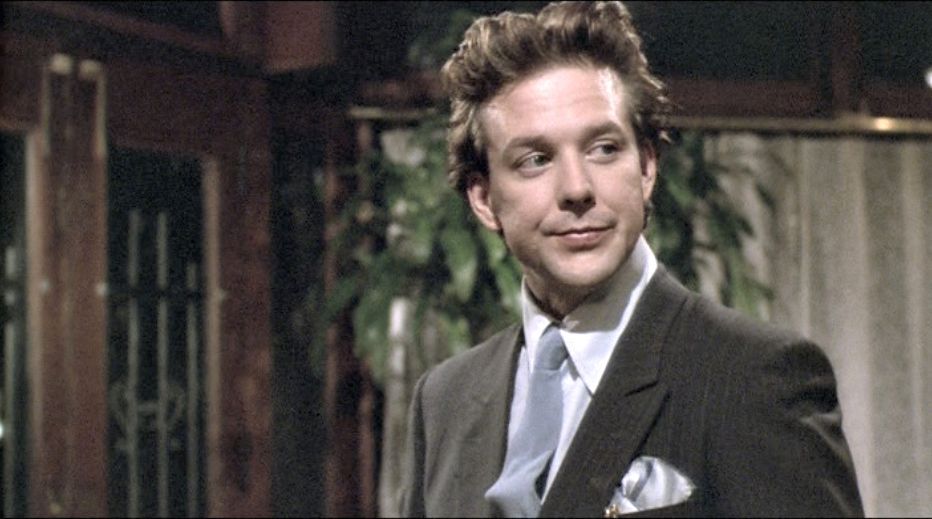
Next day, Charlie and Paulie are banging around the Village. Paulie tells Charlie that he has bought a race horse with two other guys. For money to bet with, Paulie knows of a trucking company that will soon have a safe full of money and he takes Charlie to the Bronx to meet Barney (McMillan), a “hot shot locksmith” who can crack the safe. Barney needs one last big score to help pay expenses for his wife and his 25-year-old son with special needs.

Police lieutenant Walter “Bunky” Ritter (Kehoe) meets up with Mafioso “Bed Bug” Eddie Grant (Young) and the two discuss payoffs to the police. Bunky is the go-between, collecting money from the Bed Bug to deliver to higher-ups in the police department. Later at the home he shares with his mother (Page), Bunky discusses their future while preparing to go out wearing a wire.
Diane is concerned about her future with Charlie who hints at a major score but Diane argues against his criminal plans and his continued association with Paulie. Charlie, Paulie and Barney break in to the trucking company and Barney goes to work on the safe. Before he gets it open, Paulie spies Bunky entering the building. The three thieves panic and hide. Bunky arrives in the office, sees the safe has been tampered with and draws his gun. He stumbles and falls to his death down an elevator shaft. When Charlie discovers Bunky was a cop, he goes off on Paulie, asking why a cop would be there. Barney gets the safe open; inside is a windfall of $150,000. Charlie warns Paulie and Barney to lay low and not spend a dime until he can figure things out.
Bed Bug Eddie finds out it was Paulie who robbed his money and sends his crew, lead by Paulie’s Uncle Pete (Musante), to exact revenge and discover who else was involved. Paulie gives up Barney but still has to pay the piper; he gets a thumb cut off. When Paulie reveals to Charlie that the place they robbed belonged to Eddie Grant, Charlie is apoplectic and knows he has to think fast. Using the dead cop’s tape as leverage, Charlie goes to see the Bed Bug to make his move.
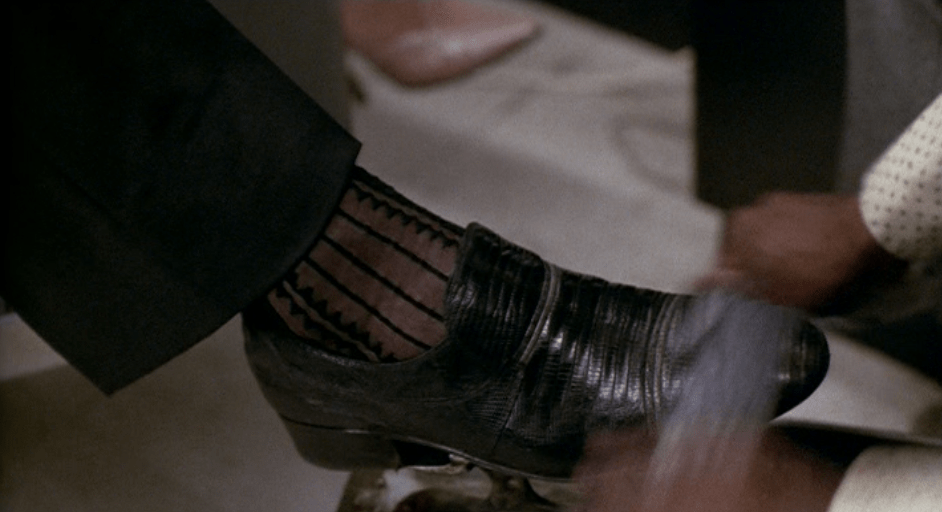
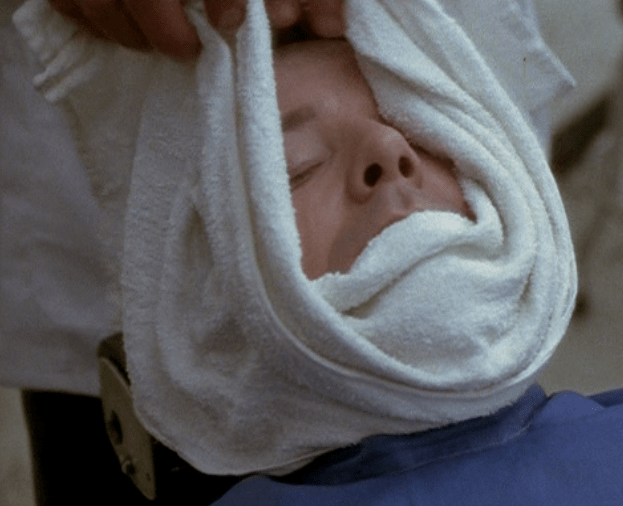
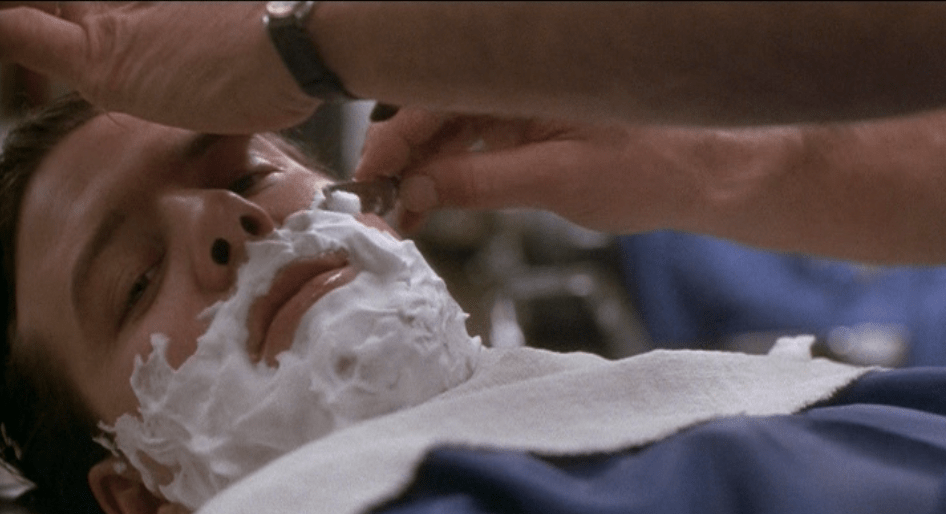
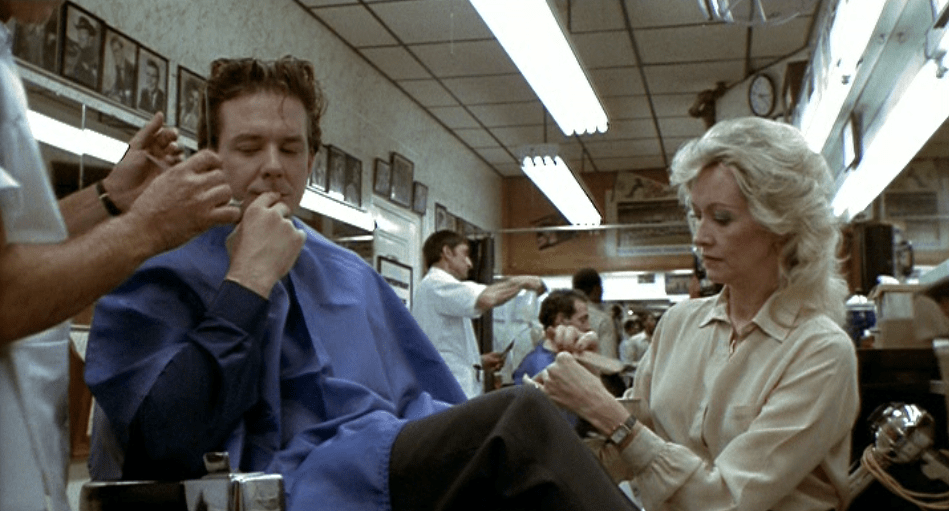
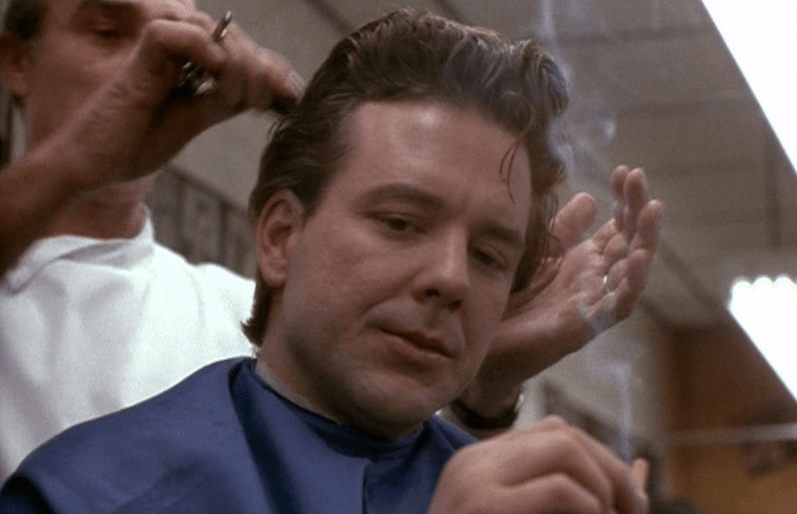
Hard to believe today I suppose but there was a time when Mickey Rourke was a cool dude. More than that, he had a certain something that set him apart. Handsome, sure, but he had a smouldering, sometimes sinister look. James Dean brooding with similar hair. By 1984 when he made The Pope, he had appeared briefly in notable big budget films 1941 (1979) and Michael Cimino’s fiasco Heaven’s Gate (1980) before playing Teddy the arsonist in the excellent neo-noir Body Heat (1981). He then portrayed Robert “Boogie” Sheftell in Barry Levinson’s Diner (1982) and this is where I discovered him. Actually, Diner is one of the few films that I can honestly say changed my life. When I rented it from the video store in my youth, I fell in love with it and I also fell in love with Mickey Rourke. He joined Bruce Willis and Alec Baldwin as my favourite actors of my teenage years and I pursued Rourke’s other films, which lead me to The Pope of Greenwich Village. Today, Diner remains my second-favourite film of all-time. It’s worth mentioning, too that – between Diner and The Pope – Rourke played The Motorcycle Boy in Francis Ford Coppola’s stunning Rumble Fish. After 1984, Rourke would make another half-dozen excellent films before descending into something I still can’t explain. He would enter “Direct-to-DVD” territory before being nominated for an Oscar for Best Actor for 2008’s The Wrestler. Mickey Rourke is gloriously outfitted in The Pope of Greenwich Village as the following gallery attests.
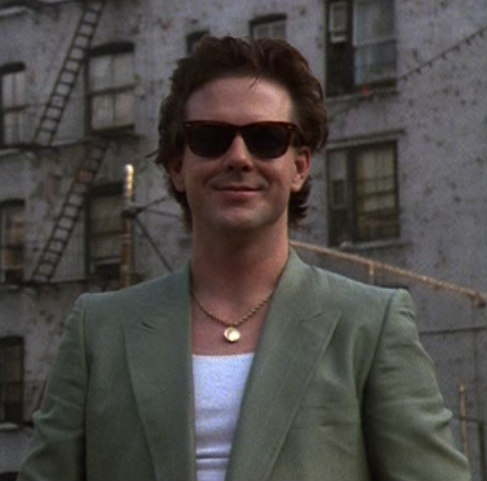

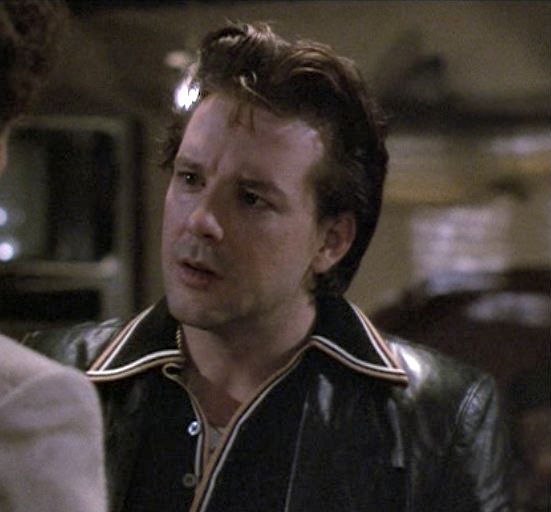
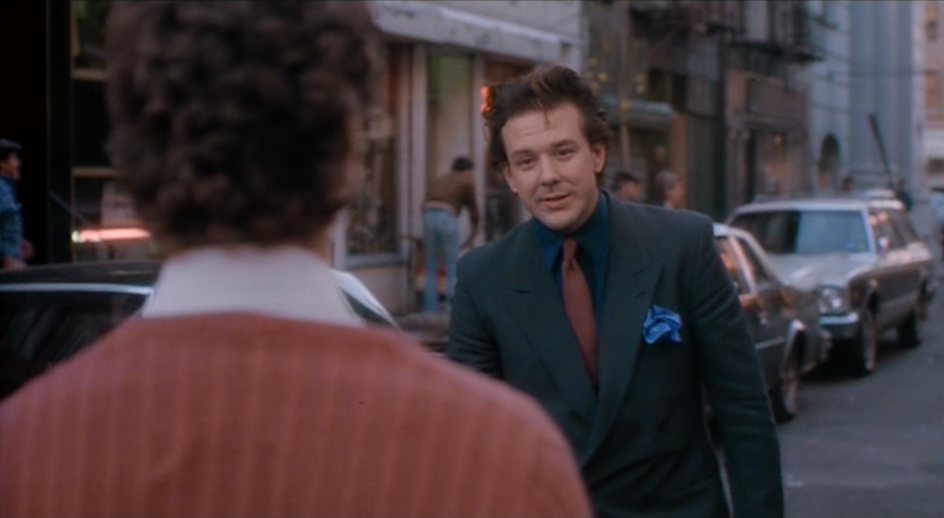
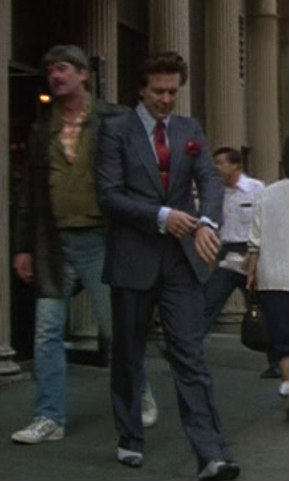
Even with these quality credits behind Rourke, it is Eric Roberts who is billed first in our film. This can probably be attributed to his performance in the film immediately preceding The Pope, Star 80, the story of the murder of Canadian centrefold Dorothy Stratten. Roberts had received many plaudits for his role as murderer Paul Snider in the film directed by Bob Fosse. Roberts does well here as Paulie and presents a real characterization seemingly ripped from the streets. The brother of Julia Roberts, Eric has had an interesting career. He also has been nominated for a lone Oscar (Best Supporting Actor for 1985’s Runaway Train) and has gone on to appear in countless films, very few of them of any note. He must be a reliable professional though as his services have been called on numerous times. Consider this: between 2013 and 2019, he appeared in 189 films or an average of 27 movies a year. Cat does the heavy lifting. Roberts and Rourke have appeared together in three other films including Sylvester Stallone’s The Expendables (2010).
Novelist Vincent Patrick published The Pope of Greenwich Village – his first novel – in 1979 when he was in his 40s. He had been an engineer but had stepped aside from his own firm and was working as a bartender when he wrote his novel. He wrote the screenplay for The Pope and did the same for his second novel, Family Business, the film of which was directed by Sidney Lumet and starred Sean Connery, Dustin Hoffman and Matthew Broderick. Michael Cimino was initially slated to direct our film with Robert De Niro and Al Pacino starring in their first on-screen pairing but eventually all three left the project. Director Stuart Rosenberg (d. 2007) came on board bringing with him a decent pedigree. Rosenberg’s major-studio debut was 1967’s iconic Cool Hand Luke. ‘Nuff said. He later directed Mr. and Mrs. Paul Newman in WUSA (1970) and The Drowning Pool (1973). He directed only two films after The Pope of Greenwich Village and then began teaching at the American Film Institute.
Daryl Hannah had previously appeared in Blade Runner (1982) and she had made a splash in the film Splash that had been released only months before The Pope of Greenwich Village. Hannah would go on to a sturdy and prolific career perhaps crowned by her portrayal of Elle Driver in Quentin Tarantino’s Kill Bill films; for Volume 2 she received her second Saturn Award having won also for Splash.
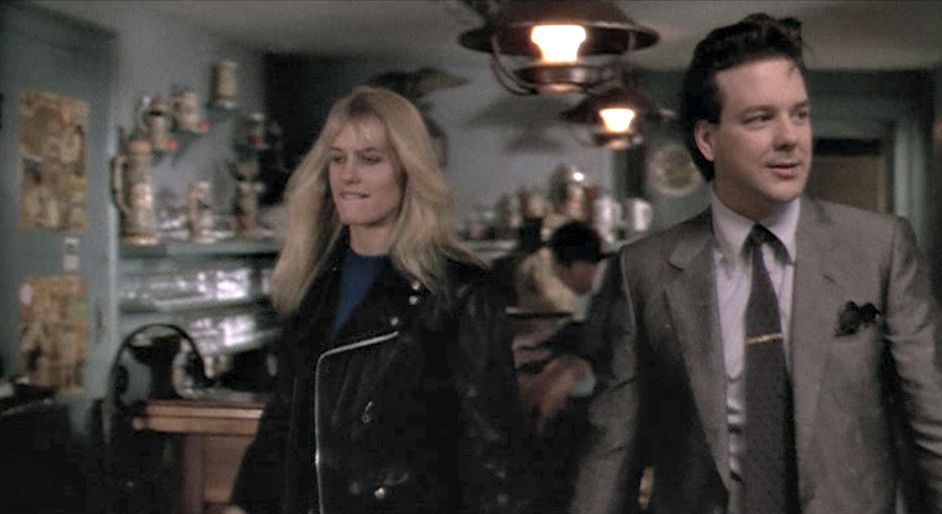
Burt Young (b. 1940) is good as the homicidal “Bed Bug” who has a tendency to “hack people up”. He employs a perfect accent and way of speaking and he can look savage using just his eyes. By 1984, Young had appeared in Across 110th Street (1972), Chinatown (1974), and Once Upon a Time in America (1984) but he is best known today for playing another Paulie, Rocky Balboa’s brother-in-law and best friend in the Rocky films. Young was nominated for an Oscar for the first film in 1976. Stage and screen actress Geraldine Page enjoyed an acclaimed career. She had appeared on-screen in Hondo (1953), Sweet Bird of Youth (1962) and The Beguiled (1971) and had been nominated for an Oscar six times by the time she made our film. She was also nominated for Best Supporting Actress for The Pope, even though she has only two scenes and about eight minutes of screen time. She would finally win for The Trip to Bountiful that she made a year later. Geraldine Page died in 1987 while performing in Blithe Spirit on Broadway. She was 62. The Pope of Greenwich Village being basically a Mob movie, the film is filled with familiar faces from other crime and Mafia-themed films.
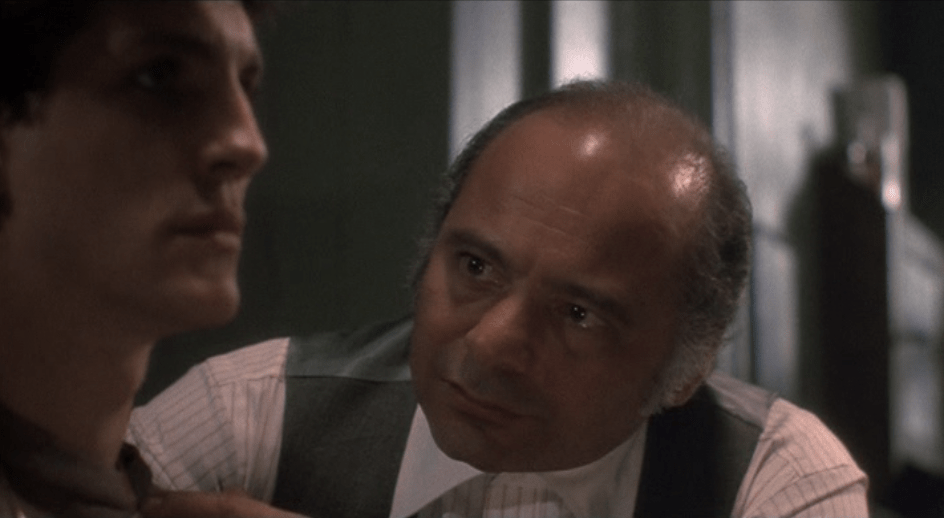
Burt Young 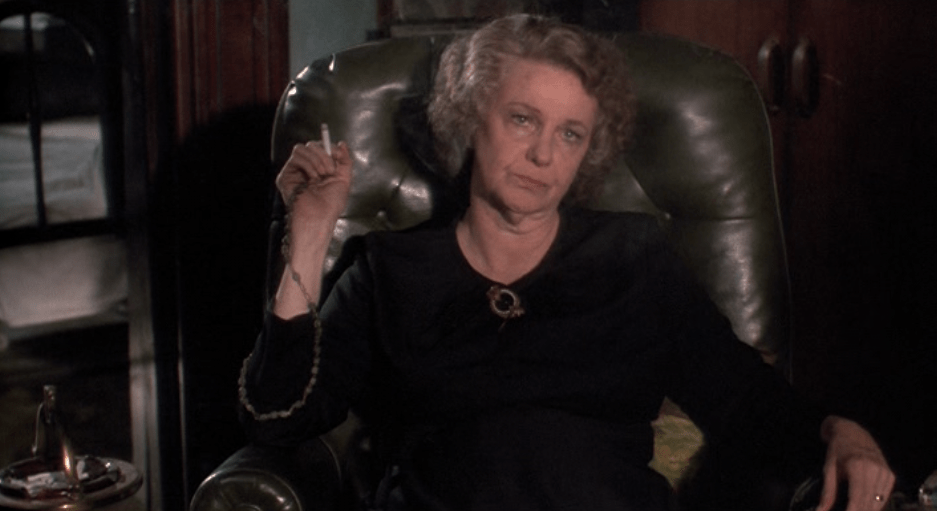
Geraldine Page
Tony Musante (d. 2013) made his bones in crime films like Once a Thief (1965), The Incident (1967) and The Detective with Sinatra in 1968 before going to Italy and making films with directors like Sergio Corbucci. Philly-born Armenian Val Avery (d. 2009) worked in Hollywood for 51 years and appeared in over 300 television episodes. I always immediately connect him with his brief appearance in Elvis Presley‘s finest film King Creole (1958). He shows up in countless notable films; The Harder They Fall (debut; 1956), The Long, Hot Summer (1958), The Magnificent Seven (1960), Black Caesar (1973), Papillon (1973), The Wanderers (1979), Sharky’s Machine (1981) and he played Santo Trafficante in Donnie Brasco (1997).
Frank Vincent (d. 2017) is noted for his appearances in the Martin Scorsese films Raging Bull (1980), Goodfellas (1990; “Go get your shine box!”), Casino (1995) and Cop Land (1997). A studio musician as a young man (Paul Anka, Del Shannon), Vincent formed a band in 1969 and hired Joe Pesci to play guitar, starting a lifelong friendship and work partnership. Vincent would break into films alongside Pesci when the two appeared in the low-budget The Death Collector (1976). They both were spotted in this clunker and cast by Scorsese in Raging Bull. Vincent would go on to play a mobster countless times, notably in HBO’s The Sopranos. Frank wrote a book in ’06 called A Guy’s Guide to Being a Man’s Man. Sounds interesting.
I’ll admit, I didn’t look into each and every one of Tony Lip’s 22 feature film appearances but a cursory glance seems to indicate that he only ever played Mafia-types; is it presumptive to assume characters named “Mafia hood” and “Nicky Bad Lungs” are “Mafia-types”? He appeared in The Godfather (1972), Raging Bull, Year of the Dragon (1985, with Rourke), Goodfellas, Donnie Brasco and he spent three years playing crime boss Carmine Lupertazzi on The Sopranos. I will further admit that it took me until writing this article to connect actor Tony Lip with the character portrayed by Viggo Mortensen in the Oscar-winning film Green Book (2017). In the early 1960’s, Lip was hired to chauffeur black pianist Don Shirley (portrayed by Mahershala Ali) on a concert tour through the south.
Diane: “When are you gonna outgrow (Paulie), Charlie?”
Charlie: “‘Outgrow’ him? Diane, maybe WASP’s outgrow people. Italians outgrow clothes, not people.”
For me, The Pope of Greenwich Village is an autumn tradition. The film takes place then – one character identifies the date as September 21st – and some fine autumn foliage is on display. Additionally, even in the city scenes, it looks brisk and cloudy and the cast is able to dress accordingly. The film was shot on location in Greenwich Village and this makes for a wonderful and authentic presentation. Charlie and Paulie are known as kids from Carmine Street and some additional action takes place under the “El” (elevated train) at Castle Hill and Westchester Avenue in the Bronx.
The fall colours are on display when Charlie and Diane drive north to Warwick, New York to look into buying the Iron Forge Inn. Located on the site of an historic forge in a home built in 1760, the Inn has been operating since the early 1970’s and offers a quaint dining experience in the country. The Tap Room boasts a fireplace where the cooking was done over 200 years ago and the Johansen family has kept the Iron Forge Inn running until the present day. By the way, did you recognize the waitress at the Iron Forge? Anna Levine/Thompson has turned up in small parts in Unforgiven (1992 – girl who gets her face cut up), True Romance (1993 – floozy Clarence talks to at start of film) and Bad Boys (1995 – as receptionist Francine, the compromised member of the police department).
The Pope of Greenwich Village is one of my Top 25 favourite films. I normally rank it among those that I fell in love with as a teen/young adult. I said earlier that there was a time when I was seeking to watch every single film Mickey Rourke made. After reluctantly returning my rented video tape to Jumbo Video, I was fortunate to be able to tape this film off TV and this was the version I enjoyed for years; actually until finally buying it on DVD only in the last five years or so. From this film I got many things. Not only an enjoyable movie and a great performance by Rourke – not to mention his stunning wardrobe – but I was also introduced to the singer that would do much to define the media consumption of my adult years.
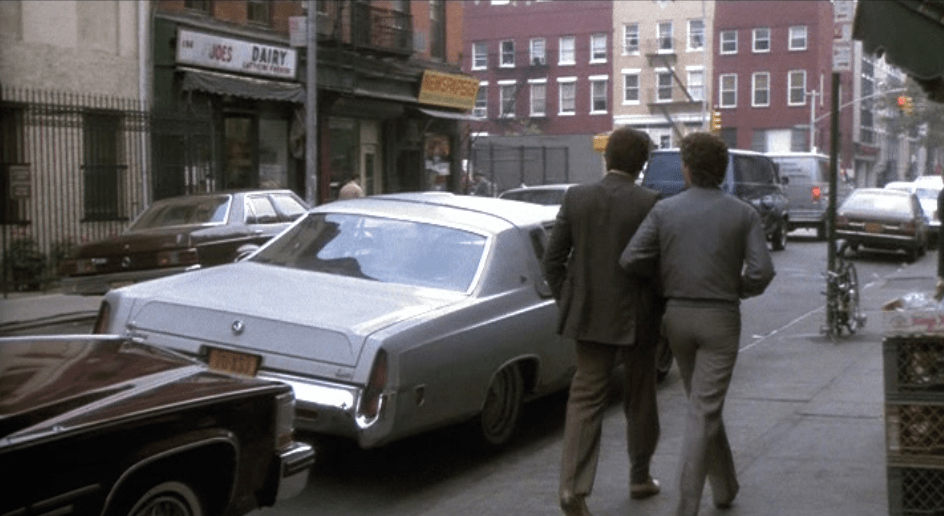
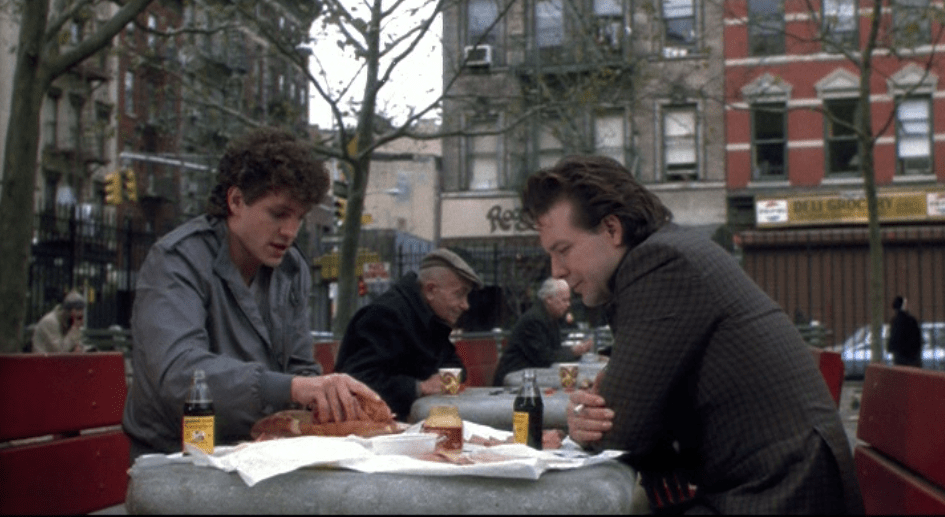
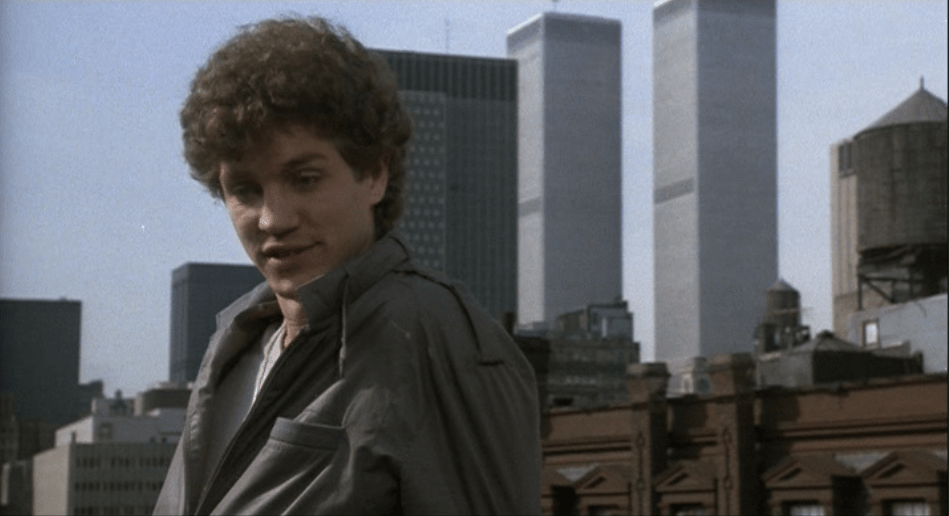
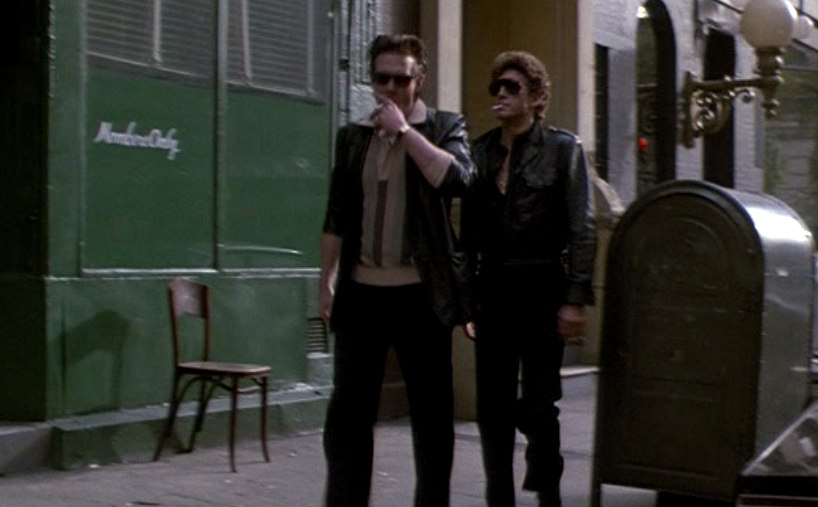
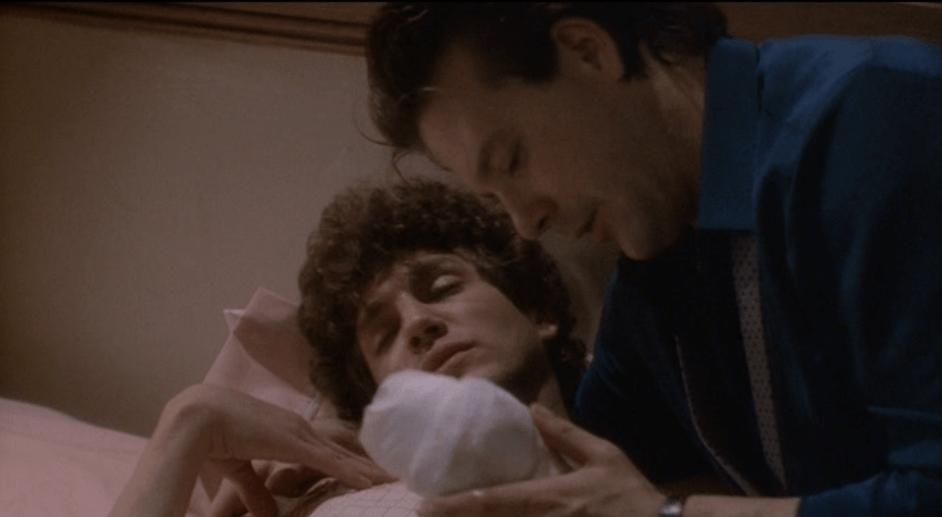
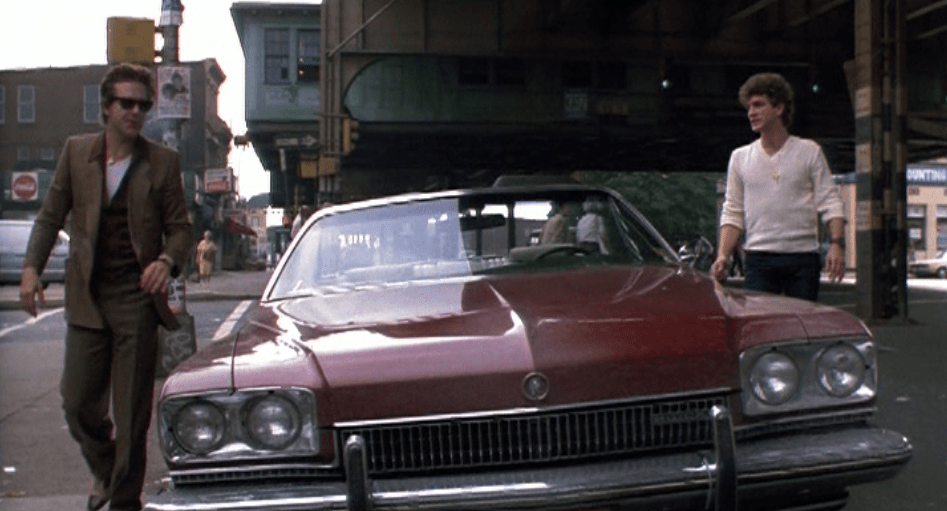
The opening titles of this film feature Rourke getting dressed – a great sequence for any fan of men’s style – while listening to Frank Sinatra’s 1966 recording of “Summer Wind”. The song is used twice more in the film and this was the first time I had ever heard Frank Sinatra. And there is a perfect harmony between this song and the context of the film. Sinatra in 1966 was older, perhaps past his prime and he had made some changes to suit his surroundings. The same perhaps can be said of the Mafiosi depicted in The Pope of Greenwich Village. Not only are the glory days for these men somewhat in the rear view mirror but they are also clearly not marquee mobsters. But they have persisted, they have carried on with the craft that got them this far. And they still do it with style. The same could apply to Frank Sinatra in the mid-’60’s. So The Pope of Greenwich Village is huge for me as it introduced me to Sinatra and “Summer Wind”, which is still my favourite song of his.
“I never ordered a brandy in my life wasn’t Cordon Bleu. I took 500 from shylocks, Pop, to see Sinatra at the Garden. Sat two seats away from Tony Bennett. That’s success, Pop.”
– Paulie tells his dad his definition of success
The feeling you get from latter-day Sinatra is the feeling you get from The Pope of Greenwich Village. More tangibly, the film has an organic, neighbourhood, street corner atmosphere and you are drawn in to walk the same sidewalks that Charlie and Paulie walk. Comedy comes in the way the two cousins relate to each other. Rourke and Roberts give such realistic performances and their lingo and the way they turn a phrase is authentic. And as Charlie, Mickey Rourke puts on a clinic on how to dress and how to carry yourself even after summer has departed the mean streets of Greenwich Village.
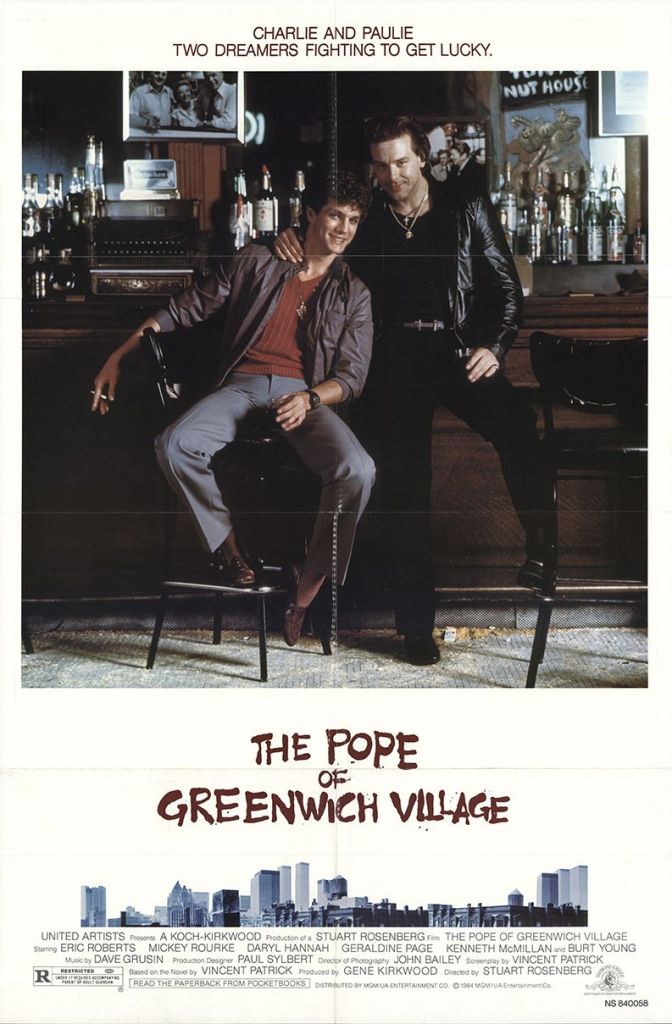
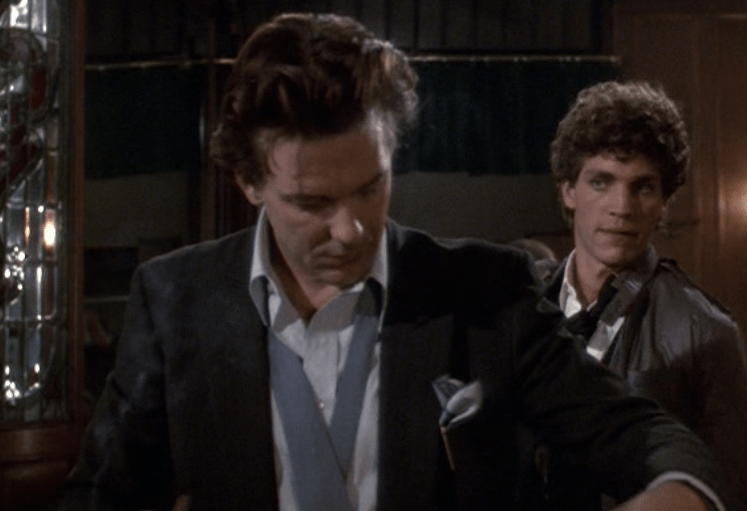
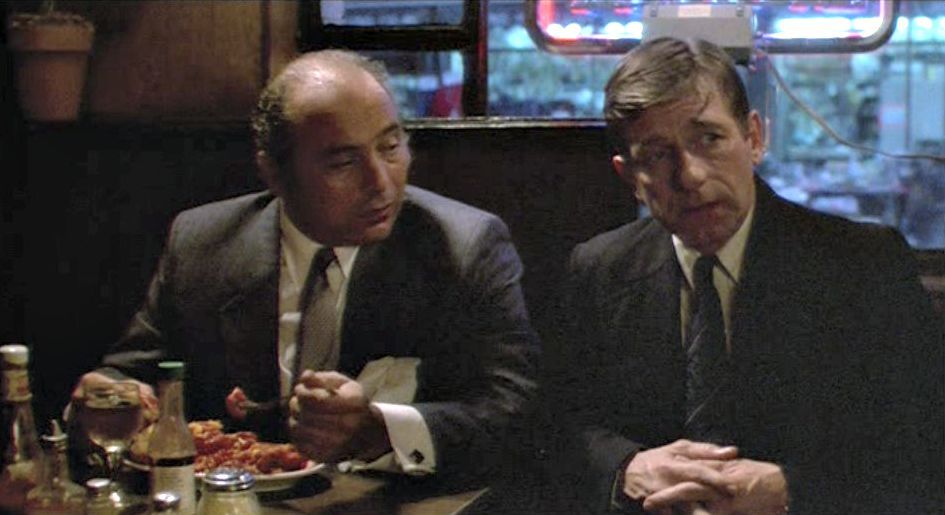
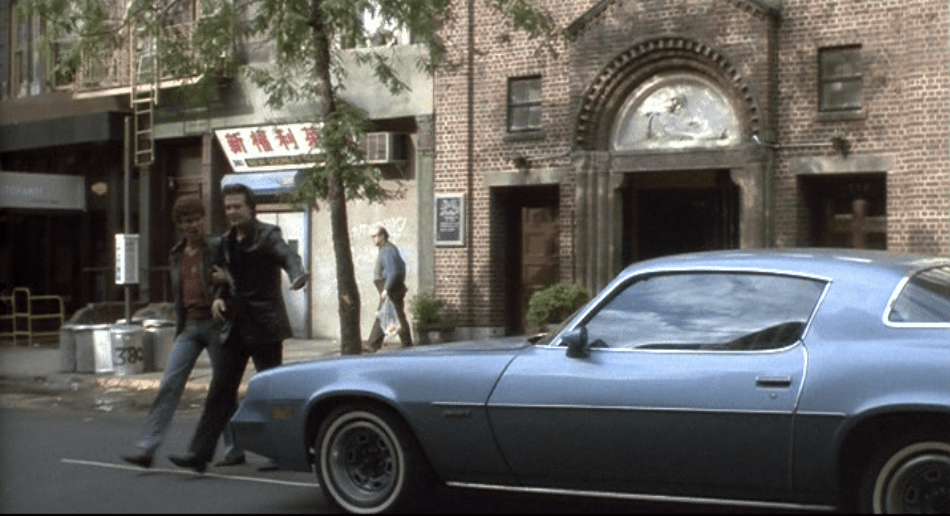
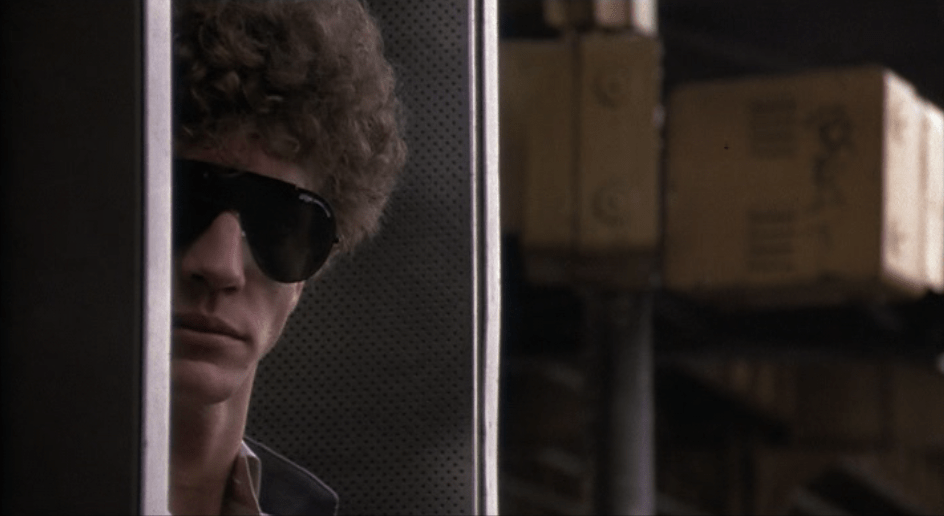
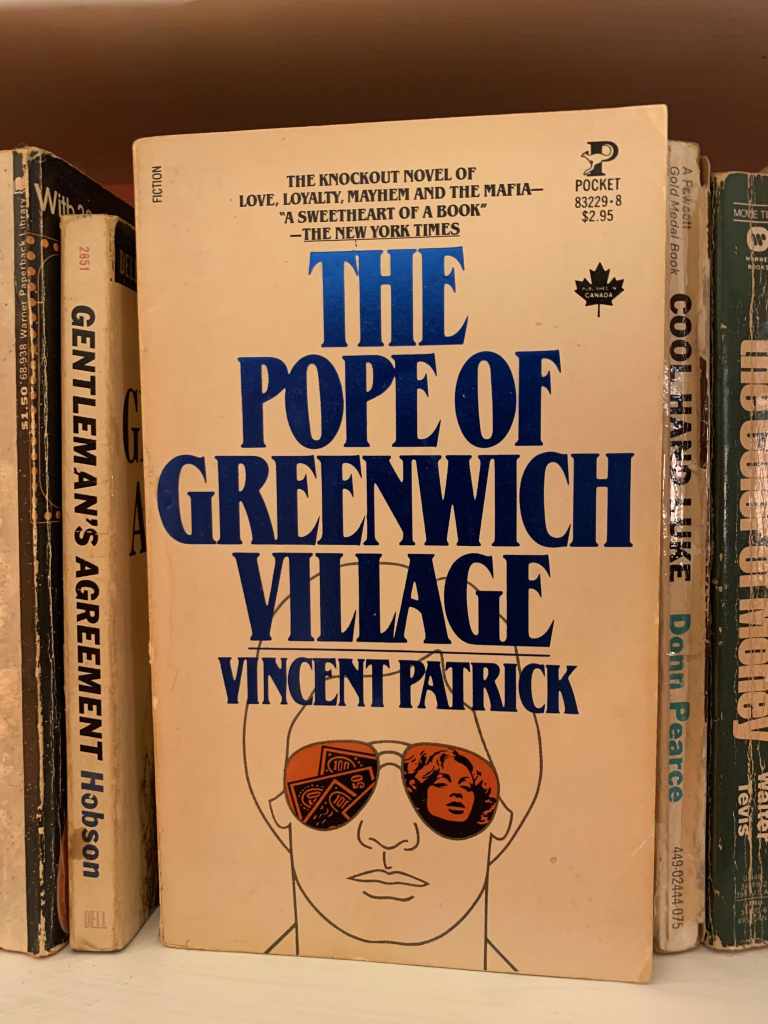

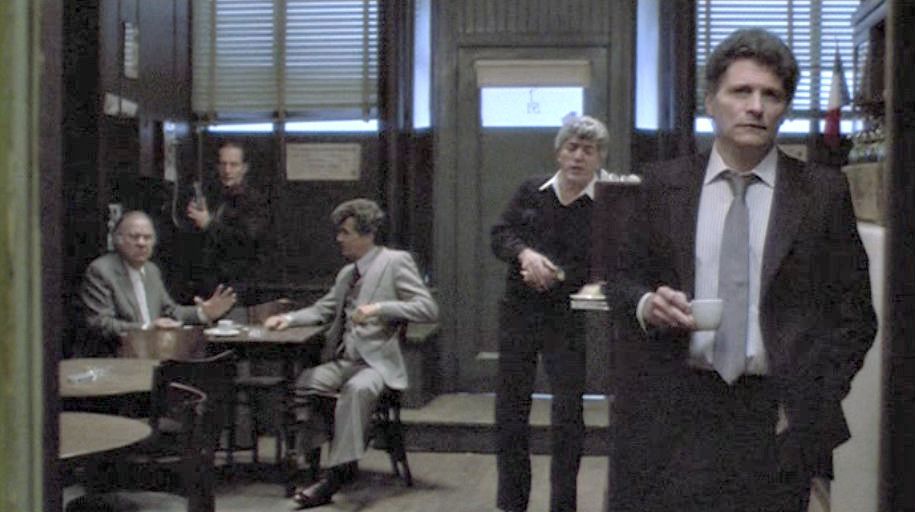
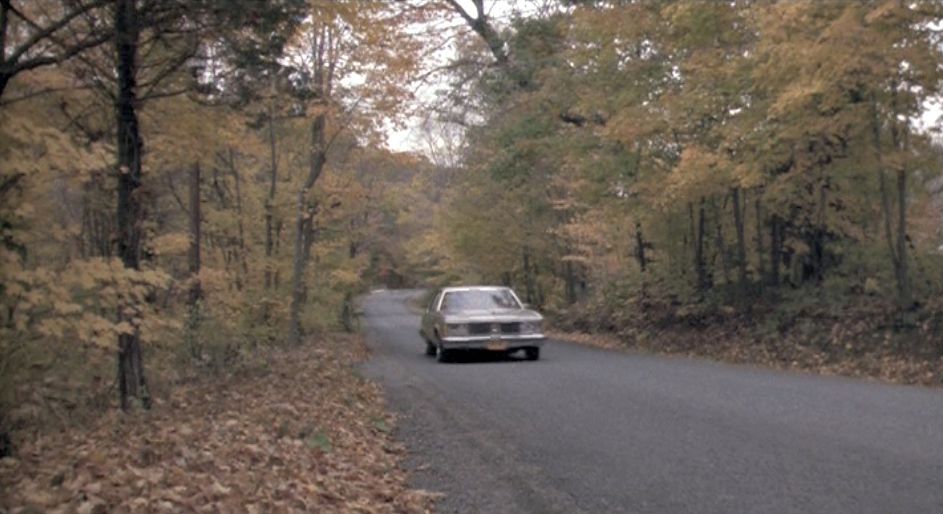

Are you considering writing about the movie Diner?
Short Answer: yes
Long Answer: I’ve been hesitant to write about my three favourite films. I don’t even like to watch them too often for fear they become too familiar. Worse to dig in and analyze them. That being said, I have taken notes and made plans for Blue Hawaii and Diner. Diner I only watch in December though so it could be another 10 months. 🙄😂 It is on the sked. No sense in talking about those two gems though unless I really dig in and go big – almost scene by scene – and that’ll be time consuming. You’ve got me thinking now, though!
For me there is one word for Diner: Nostalgia.
You’re so right.